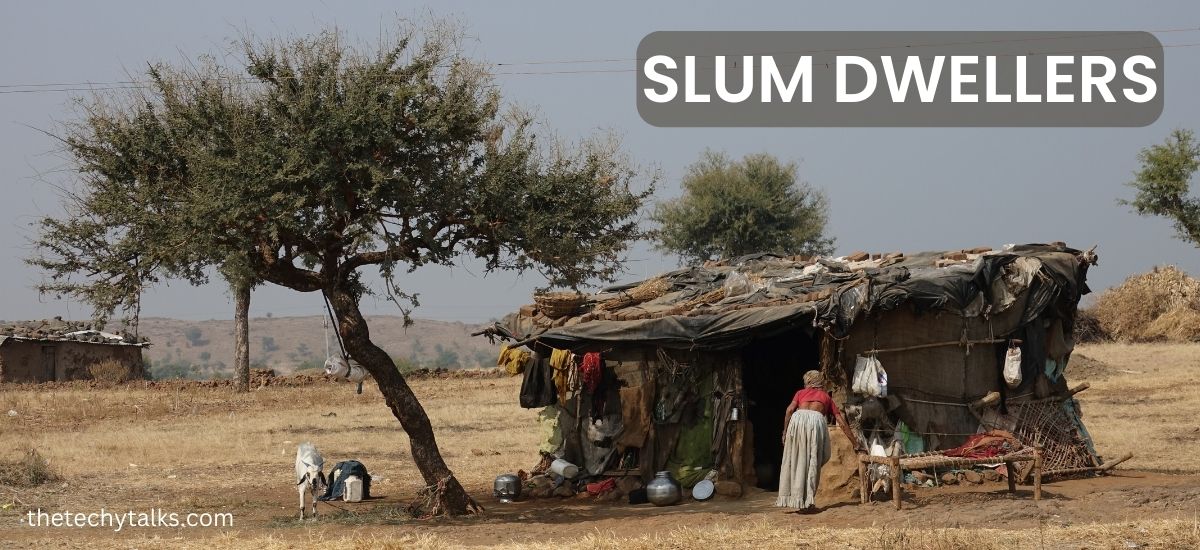
Problems Faced by Children in Slums Areas | Education of Slum Dwellers

Education is a fundamental right of every individual and the foundation of every society. Education plays a crucial role in shaping a person's character, knowledge, and skills; it is essential for the progress and development of any nation. However, in slum areas, education in slums is a significant concern due to various problems and challenges.
Access to quality education is limited for children living in slums. Most of these children have limited or no access to schools, and even when they do, the quality of education is often poor. The lack of education opportunities perpetuates the cycle of poverty and severely limits their potential for a better future.
This blog will shed light on the slum children's education problems and provide solutions to these issues:
Education Problems in Slum Areas:
The education problems in slum areas are multi-dimensional and complex. Some of the most significant challenges faced by these communities are:
Poverty: Poverty is the leading cause of education problems in slum areas. Most of the people living in these areas are below the poverty line, and they cannot afford to send their children to school. As a result, the children are forced to work to support their families instead of getting an education.
Lack of infrastructure: Slum areas lack basic infrastructure like schools, libraries, and other educational facilities. The existing schools are often overcrowded, and the quality of education is poor due to a lack of resources.
Health issues: Slum areas are often breeding grounds for diseases, and children living in these areas are more susceptible to health issues. These health issues affect their attendance and performance in school, making it difficult for them to keep up with their studies.
Gender inequality: In many slum areas, girls are not given the same opportunities as boys regarding education in slum areas. Families often prioritize their sons' education over their daughters', leading to a gender gap in education.
Child labor: Many children in slum areas are forced to work to support their families. This makes it impossible for them to attend school regularly, and they often drop out of school altogether.
Read also: beti bachao beti padhao

Solutions to Education Problems in Slum Areas:
Despite these challenges adversely affecting the education of slum dwellers, several solutions can help address the education problems in slum areas. Here are some of the potential solutions to these problems:
Government Intervention: The government needs to actively address the education problems in slum areas. They should provide financial support to build more schools and improve the quality of education. They should also create programs to support children from low-income families and ensure that girls are given equal education opportunities.
Community Involvement: Communities can be vital in addressing education problems in slum areas. They can create community schools and volunteer to teach children. They can also organize programs to encourage parents to send their children to school and support children struggling with their studies.
NGOs: Non-governmental organizations (NGOs) can also help address education problems in slum areas. They can create programs to provide scholarships, school supplies, and uniforms to children from low-income families. They can also organize health camps to ensure children are healthy enough to attend school regularly.
Technology: Technology can be a useful tool to address problems concerning the education of slum children. E-learning platforms can provide access to quality education for children who cannot attend school regularly. Educational videos and podcasts can also help children learn and improve their knowledge and skills.
Skill Development: Providing vocational and skill development training to children and adults can help them secure better employment opportunities. This, in turn, can help families overcome poverty and enable them to send their children to school.

Education is a fundamental right, and it is essential to address the education problems and effects of slums. The government, communities, NGOs, and individuals can play a vital role in addressing these issues. Providing quality education to children living in slum areas can help break the cycle of poverty and make them productive members of society. Only by working together can we create a brighter future for children living in slum areas.






















